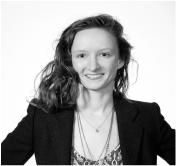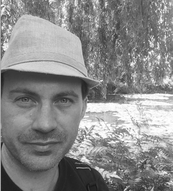|
Lizzy's update Since our last update, I have been completing applications to M.F.A. graduate programs. The process of writing is usually very clarifying for me in my practice and is something I look forward to during my graduate studies. I should be notified on my status in spring! For my applications, I took a hard look at my undergraduate studies. Here’s a snippet of rough draft that didn’t made it into any statement: After one tumultuous year of attempting to adjust to RISD (Rhode Island School of Design) and everything it had to offer, I was reminded why I wanted to enter the art world in the first place, my favorite artist, M. C. Escher. What seemed like a childish fantasy as a brainy youngster in middle school soon gave way to more serious pursuits of charcoal figure studies and technical skill. As I filled my mind with more and more background education for the arts, Escher was almost buried. Was he even mentioned in the art history lectures? Without very much emphasis on STEM subjects in preparation for art school, I had lost sight Escher in my rear view window. My tenacity for STEM subjects held on, despite my neglect, and I coordinated to unofficially audit a Brown/RISD Dual course that did not fit completely into my schedule. Titled “Making Visual Illusions” the class introduced the neural basis of the human visual system, historical examples of optical illusions, and detailed the reasons why these illusions exist in the brain. It turns out the class itself was part of collaborative research on the part of the two professors, who are actively researching art and science collaboration. Their findings were published in June 2016 in the interdisciplinary journal Leonardo. (A link to download the article is here, although it requires subscription to the journal or purchase) The professors names are Leslie Welch of Brown University and Carl Fasano of Rhode Island School of Design. It was not until early 2016 that I even knew the class was a research project, but I am not surprised at all to find out. This unique study flavors so much of the work I hope to accomplish. Not only does it exist at the intersection of art and science, or specifically combine the practices of the scientist in their lab with the practices of the artist in their studio, it also contains an educational component: how can sci-art education in the classroom be improved? It is an immense privilege to work in this field. In talking with my sister, postdoctoral researcher in astrophysics at the University of Amsterdam, over the holiday break, we mused on the amazing quality of being able to do such specialized work, a direct result of what is clearly a thriving global culture in this sector. Out of respect of that system, and for the folks who may never get as close to it as we, my applications to grad school made clear my goals: As a working artist, I hope to do collaborative, project-based work across disciplines, with an emphasis on the poetic communication of science research and the promotion of STEM appreciation and awareness. I am interested in exploring some ideas exposed in my applications in my collaboration with Mark. Within the field of printmaking, my intended concentration, I am interested in the relationship between its role in disseminating scientific knowledge during and after the Scientific Revolution, both through text and figures, and the role of the draftsman. What kinds of relationships were there, in other words, in what capacities did the creators (writers, typesetters, draftsmen, and engravers) of a published volume collaborate? How do these historical issues relate to the current rapidly and widely available knowledge centers of our time? To what limits does that availability stretch? And, what role can, or does, the contemporary artist play in aiding the scientist in varying levels of communicating their work? What can be said of Mark’s inspiration taken from physicist and origami artist Robert Lang, or his and his colleagues’ use of graphics in presentations, publications, and outreach? Is it important work that makes it to the public stage, or just interesting work? Happy New Year! Mark's update Some good news, for science and art in general, and for Lizzy and me: a Franco-German TV documentary made in 2015 called "The Origami Code" that featured me is going to be a NOVA episode, (tentatively?) scheduled for February 15, 2017! I've been working a bit with the producer to try to clarify the 5-minute or so section about origami and cosmology, and I think it's helped. I also made the following video, for possible inclusion in the program. I think it won't end up in the show, but it does show how a galaxy with three filaments coming off of it would be folded out of a sheet. First, the inner parts of it assemble, and then the outer parts. (This video intends to show the geometry and folds of a single snapshot, and does not show a time sequence of what first assembles). The grey/black borders between orange and blue regions are creases in the final, folded-up sheet. These creases become invisible at the end, since they're only at the edges). Happy New Year!
0 Comments
Leave a Reply. |
Visit our other residency group's blogs HERE
Lizzy Storm is an artist and owner of Lizzy Storm Designs based in Atlanta, Georgia.
Mark Neyrinck is an award-winning astrophysicist and cosmologist, and a postdoctoral researcher at Durham University, United Kingdom.
|



